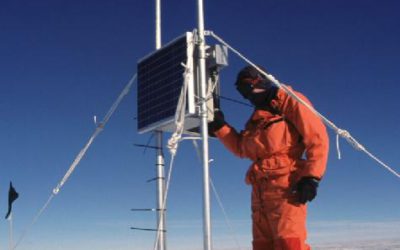UK Polar Data Centre

Discovery Metadata Systems
A web-based system to discover polar datasets collected by UK-funded scientists. Either enter a search term into the box below or visit the Discovery Metadata System directly.
Atmospheric Data Access System
An online data access tool to discover, visualise and access atmospheric and space weather data holdings from the polar regions.
Antarctic Digital Database
The Scientific Committee on Antarctic Research (SCAR) ADD is a seamless compilation of topographic data for Antarctica to 60°S. The ADD is the place to get datasets such as the Antarctic coastline or contours for onward work in desktop GIS.
Version 7 was released in January 2016, and includes completely updated ice coastline and a modern, easy to use web viewer and data download interface. Major data updates occur on a six monthly basis, minor updates and corrections are done as required.
The ADD is a service to the whole Antarctic science and logistics community, and as such we invite all users of the data to be active participants in improving its quality.
ICEMAR
The EC-funded ICEMAR project is a GMES pilot service delivering sea ice information products directly to ships navigating through sea ice in the Arctic.
The ICEMAR Web Interface (IWI) is an online tool for monitoring this operational activity. This tool is currently under development and only accessible to registered ICEMAR users.
IMAGE Auroral Boundary Data
The objective of this project was to investigate whether magnetic reconnection in the space environment has a characteristic scale in space and time by characterising statistically the spatial and temporal structure of the footprint of reconnection as observed in the Earth’s ionosphere. This knowledge has the potential to provide constraints for multi-scale reconnection models. In this project the reconnection character was inferred from auroral boundary motion in conjunction with a reconnection model.
Lower Power Magnetometer (LPM) Network
Marine Geophysical Data Portal
An interactive web tool allowing users to search for and visualise marine geophysical data collected on UK research vessels in the polar regions
Data currently served includes multibeam bathymetry, magnetic data and sub-bottom profiler data.
Marine Metadata Project
The Marine Metadata Project aims to enhance the availability and accessibility of BAS marine data.
Background
There are a large number and wide range of different marine datasets collected by BAS vessels over the last few decades and their collective management represents many years of future work. This project will deal with what ties all these datasets together, namely the cruise metadata including the when, where, who and why and the identification of what happened on each cruise (the events). Significant work has already been done in this respect by the UK PDC, the BAS Archives Service, and the British Oceanographic Data Centre (BODC) but the picture is still very much incomplete in terms of datasets collected and cruises run. The system will provide visualization and access to many types of marine data and will initially concentrate on four datasets (underway, bathymetric, bio-acoustic, benthic biology).
Marine Portal
The Marine Metadata Project portal is currently under development. As of August 2014 the backend components and data processing systems are complete. The web frontend is under development and is aiming for a 2015 release. The project has been paused due to work required for the BAS public website redevelopment.
The portal will provide the ability to view available datasets, cruise details and equipment event summaries. The web portal is built up of three main components:
Event Database Backend Data API – This is the core database that contains all the details about events, instruments, ships, people and projects. The events database will be exposed via a REST like API that allows queries to be passed and returned as JSON formatted data.
Mapping Server – Geoserver – The actual processed mapping data is served via a Geoserver instance with Geowebcache. The cruise layers and events will be available in four projections: Antarctic Polar Stereographic (EPSG:3031), Arctic Stereographic (North Pole LAEA Alaska EPSG:3572), South Georgia Lambert (EPSG:3762), Spherical Mercator (EPSG:3857, 900913)
Web Frontend – The Geoserver instance and backend API are combined to form a front end that allows browsing and searching.
Meteorology and Ozone Monitoring
Long-term meteorological and ozone observations and data help determine the causes of climate change in the polar regions.
Polar Airborne Geophysics Data Portal
The NERC Airborne Geophysics Data Portal provides direct access to airborne survey data.
The system provides access to airborne survey data including ice thickness, radio echo sounding, magnetics and gravity surveys.
Polar View
Polar View was developed in the Antarctic by an international consortium of sea ice experts – provides a near-real-time sea ice information service for ship operators.
South Georgia GIS
The South Georgia GIS is a collection of topographic, management and scientific data about South Georgia, hosted by BAS on behalf of the Government of South Georgia and South Sandwich Islands.
It is a free service to the science community, and is the place to visualise and download South Georgia-related data for onward work in desktop GIS, compiling maps and so on.
Version 3 will be released later in 2016, and will include updated substantially updated topographic layers. Visit the modern web-based viewer to visualise the data, or the thematically organised download repository where the data is freely available.